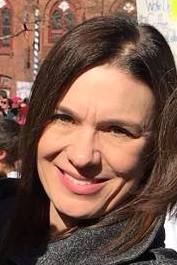Sharing and promoting the work of our regional collaboratives is extremely important. It is their hard work and effort that drives the engine that is the National Fund. Local Investment @ Work is a platform where regional collaboratives share stories about any successes, challenges, thoughts, or more about the important work they are doing locally.
Please be sure to stay up to date with all Local Investment @ Work updates by following our LinkedIn Showcase Page, as well as using #LIAW on social media.

Many of us working to identify good strategies and support effective programs understand the great importance of involving communities in informing and implementing our work. When we fail to engage with those we aim to assist, we run the risk of ending up with programs that are mismatched with real need, or we may overlook the best opportunities for lasting impact. At worst, we can even develop approaches that produce harmful unintended consequences or engender distrust with communities. In working with youth, we hear this again and again. Youth tell us that they want to be heard and respected as the most knowledgeable experts of their own experience. They want to be part of solutions. And they want to have access to programs that are aligned with their own aspirations, not just the ones that someone else has crafted for them. But those of us who develop and fund workforce strategies do not always know how to best approach effective community or youth engagement. Where do we start? What mechanisms can we use to lift up youth voices in a way that has a meaningful impact on our work?
On February 28th, the Baltimore Workforce Funders Collaborative – a National Fund affiliate – held a learning program for philanthropic members of the Association of Baltimore Area Grantmakers entitled Youth Perspectives on Reshaping Workforce Development in Baltimore. The program was the first stop on a Baltimore listening tour where stakeholders are hearing what some young adults have to say about education and employment opportunities. This was also a chance for local funders to learn about an approach to conducting community-based research.
The uprisings that followed the death of Freddie Gray were a potent reminder that many young adults in Baltimore face barriers that have excluded them from opportunity in the local labor market. According to a 2016 Call To Action released by the Collaborative and our partners, roughly one in five of Baltimore’s young people ages 16-24 are neither in school nor working. In response to the unrest, many ABAG members began to amp up efforts to understand systemic obstacles and develop programmatic approaches to address the striking opportunity gaps for young adults. Experience tells us that to do this well, we need robust and sustained ways of involving young people in identifying operational problems that may be most visible to them and in shaping solutions that are responsive to their real needs. Prioritizing this as a best practice, staff within the Annie E. Casey Foundation’s Baltimore team dedicated resources to put a youth engagement plan into action in 2016.
This plan involved the identification of a team of seven Black community leaders who would develop and conduct a participatory research strategy. These men and women were already heavily involved and engaged in Baltimore communities, using unpaid time to speak up at neighborhood meetings, volunteer with youth-serving organizations, and organize community groups to demand policy and program changes. The Casey Foundation recognized that these young leaders, who are of and active within the communities for which they advocate, offer something that must be valued by philanthropy. And so, they worked with them to develop their skills as consultants and offered an opportunity to monetize their work with the Foundation as paid researchers.
With support from Frontline Solutions, a “Black-led social justice consulting firm,” the group of seven conducted exploratory research to understand the economic landscape impacting youth in Baltimore and to learn best practices for engaging community voices. They then went on to create customized engagement strategies to reach out to youth ages 16-24 in a variety of neighborhoods across the city. Through “corner conversations” and focus groups, they talked to over 80 Baltimore youth about their aspirations, concerns, and overall impressions of workforce development practices in Baltimore. The consulting group reported that they could leverage their own shared racial and economic experiences to facilitate honest and meaningful communication with city youth. Based on what the team learned from their conversations with area youth, they developed a set of recommendations that can be implemented by organizations, businesses, and systems to more effectively work with youth.
The findings from the consulting group’s research can be found in a report published by the Casey Foundation last month: Reshaping Workforce Development in Baltimore. Focus group feedback also helped inform the report’s recommendations, with young people in Baltimore advocating for:
- Increased investment in supportive services that help young people overcome barriers to employment;
- Making job opportunities and training resources more visible and accessible;
- Greater utilization of community centers that are already serving young people;
- Supporting mentors working in underserved communities;
- Encourage entrepreneurship with an explicit focus on black, low-income youth and young adults;
- Creating work opportunities for individuals with felony convictions.
As pertains to the recommendations for improvements to Baltimore’s workforce system, other city agency systems, and youth-serving organizations, members of the Baltimore Workforce Funders Collaborative will continue to discuss next steps at our upcoming meetings.





